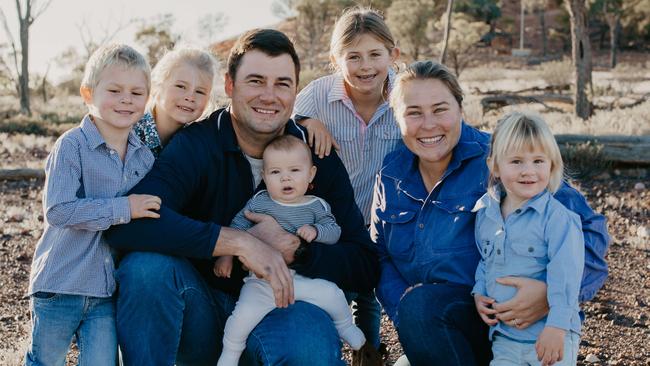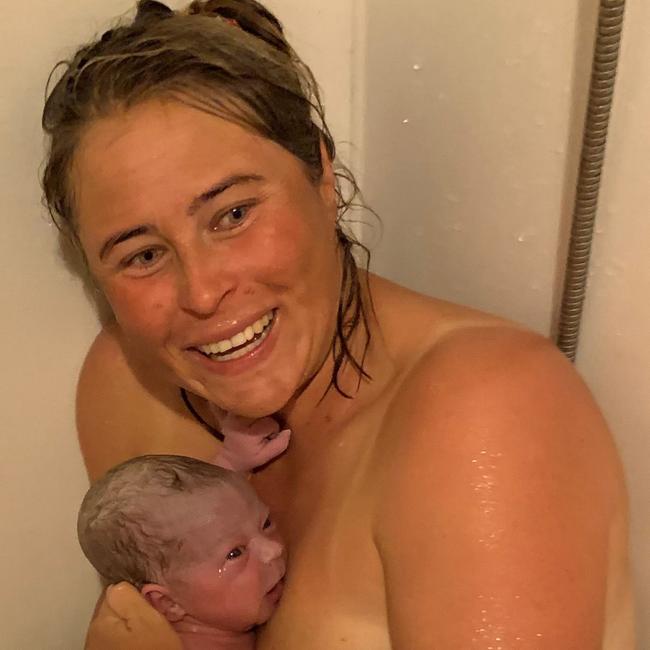Maternity services in the bush are at crisis levels but midwives say they have the solution
After three decades of shutdowns, the lack of maternity services in rural and remote Australia is now a national crisis, with babies increasingly being born without healthcare on hand

When 32-year-old Laura Wilson gave birth in the shower in a remote Queensland town earlier this year, her husband and two of her children were by her side – but not a midwife, and certainly not an obstetrician.
For her previous four births, Ms Wilson had packed a bag at 36 weeks’ gestation and made the 900km trip from her hometown in remote central Queensland to Toowoomba, spending weeks in temporary accommodation waiting to give birth. It’s the only option for thousands of rural women amid a critical lack of maternity services.
This time, with four children aged under six to care for and a family business to run, it was not possible to leave home. Ms Wilson went into labour in Quilpie – a town that has no maternity service whatsoever and that for six months of last year didn’t even have a GP. Ms Wilson ended up giving birth in a rented house in Charleville, two hours from her home, where the family had rushed to in an attempt to access a midwife.
“I don’t think I was in the shower long before I called out to my husband to say I was having the baby,” she says. “He came out on to the ground. I placed him on my chest. It was incredible.
“But I do find it a bit upsetting that we don’t have access to rural midwifery care. To not have that basic service of being able to deliver your baby close to home, it’s really hard.”

After three decades of shutdowns, the lack of maternity services in rural and remote Australia is now a national crisis. Close to 40 services have closed in Queensland since 1998. The number of babies born before arrival at hospital has increased commensurate with the rural service closures. In 2021, 1888 babies were born before arrival at hospital.
“Birthing is an incredibly significant event in a family, and to have that happening without support, that’s a terrible thing to happen in a country like Australia,” says National Rural Health Commissioner Ruth Stewart. “Of those babies born before arrival we know that many of them survive, but not all of them do, and that is a tragedy.”
Northern Territory-based professor of midwifery Sue Kildea said the situation in remote communities was dire, with between 18 and 22 per cent of babies born preterm in Top End Aboriginal communities.
“I don’t know if there’s a word worse than crisis,” Professor Kildea said when asked about the lack of services. “I just think it’s absolutely appalling that we don’t have national leadership on this.”
Professor Stewart is joining with peak midwifery groups and rural doctors bodies to call for a midwifery group practice model to be widely rolled out in the bush, with women with low-risk pregnancies able to give birth in local multidisciplinary health centres.
Care would be co-ordinated with obstetrics-trained rural generalist GPs where possible, in line with a successful model operating in WA. Transfer arrangements would be in place for the small percentage of women who may require services in larger centres during labour.
“We do already have midwives in many of these rural locations,” says Liz Wilkes, the managing director of My Midwives, a private practice that services rural towns. “We just need to be enabling them to work to their full scope of practice, which means that they’re able to provide birthing services closer to where women live in a model linked to the larger regional centres where there is obstetrics cover.”
The Australian College of Midwives’ Alison Weatherstone said a midwifery continuity of care model operating in the context of a wider multidisciplinary team was cost-effective and safe with effective triaging.
“Rural women should be able to have choice and access to a maternity model of care that is equivalent to women in metro areas and cities, and we know that’s not happening.”
Professor Stewart, the Australian College of Midwives and the Rural Doctors Association of Australia will lead a roundtable on rural maternity services in Canberra next month. “Australia’s maternal and perinatal morbidity and mortality statistics are very, very good, but those averaged statistics hide what is happening in the bush,” Professor Stewart says. “The evidence is really clear, rural maternity services can be safe and high quality when well-planned and well-managed.”







To join the conversation, please log in. Don't have an account? Register
Join the conversation, you are commenting as Logout